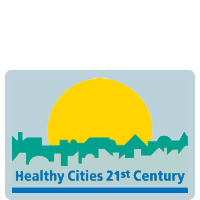People living in more deprived areas have on average worse health and live in poorer quality environments. The social determinants of health/social model of health set out in the Marmot Review underpins the public health approach in Northern Ireland, in particular a commitment to tackle ‘the causes of the causes’.
The local environment is one of these ‘causes of the causes’. For example:
|
Environmental factor |
Health inequalities impact |
|---|---|
|
Air pollution |
Poorer communities have a higher prevalence of cardio-respiratory and other diseases |
|
Green/open space |
35 per cent of people in the lowest social grade visit green spaces infrequently (less than once a month), which is likely to be due to both the low availability and bad quality of green space in deprived areas |
|
Transport and traffic |
Children are four times more likely to be hit by a car in the 10 per cent most deprived wards than in the least deprived wards |
|
Food |
Low income and area deprivation are both barriers to purchasing fresh or unfamiliar foods |
|
Housing |
Children in unfit housing are more likely to have mental health problems, such as anxiety and depression, and a range of other ill health effects – cold housing can affect the numbers of winter deaths and respiratory diseases |
|
Community participation and social isolation |
In many communities facing multiple deprivation, stress, isolation and depression are all very common, and low levels of social integration and loneliness significantly increase mortality |
Links between environmental factors and health inequalities
Source: Adapted from Spatial Planning and Health (Allen et al for the Institute of Health Equity, 2011)
Planning and the other built environment professions can help to reduce health inequalities by ensuring that they address these environmental factors, especially by improving the environments of those people with the poorest health/improving environments in the most disadvantaged and sprawled areas (see Resource 3 for more information).
Could Belfast be the next Copenhagen?
Copenhagen’s population of around 560,000 people is strikingly similar to that of the Belfast Metropolitan Area (580,000). After a study visit to Copenhagen in early 2014, Danny Kennedy, MLA, said:
‘Building a safe and accessible cycling infrastructure should be part of an overall process whereby cities and towns are designed to improve the quality of life for the population… The knock-on effects are a healthier population putting less strain on health services. Traders too, reap the benefits from the numbers of people travelling round the city with countless bike stands for people to stop and shop.”
The benefits from higher rates of cycling is just one of the advantages of a planning approach that puts people first, and that aims to improve the quality of life for all. This vision was first articulated in Copenhagen 40 years ago, and actions – small and large – have been implemented to achieve it. The result of decades of incremental change in pursuit of a vision that puts people first is a city that is consistently rated as one of the most liveable cities in the world.


